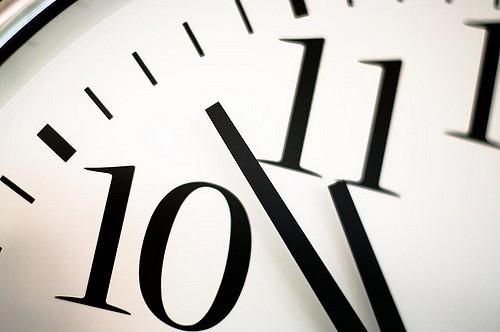By Dane Lorica, | November 25, 2016

With the use of helium atoms, scientists have measured the duration of a zeptosecond. (Steve Grosbois/CC BY-NC-SA 2.0)
Researchers have recorded the shortest unit of time "zeptosecond" with the use of helium electrons and the principle of the photoelectric effect.
In 1905, Albert Einstein defined the concept of photoelectric effect which made him win a Nobel Prize in Physics. It tells that when a particle of light or photon from a certain energy hits an electron, it can release the electron from its atom. The process called photoemission involves the ejection of electrons from the photon. It is also the principle adopted by solar energy.
Like Us on Facebook
Today, using the Einstein's established principle, scientists have been able to capture the electron emission ejected from helium atoms. The very short period for the process was also measured.
Stewart Wills revealed that the measurement of time was made possible by an equipment called Attosecond Streak Camera which carries two lasers of different light striking in very short shots. The camera was focused on a simple gas helium which has atoms each containing two electrons.
Two lasers were used. The first one, made of ultraviolet ray, sought to trigger the release of electrons from helium. Firing takes 100 attosecond pulses where one attosecond is approximately equal to 10 to 18 seconds. The second laser was used to capture the electrons' escape. Firing takes four femtoseconds at a time wherein a femtosecond is equal to 10 to 15 seconds.
The infrared laser detected the release of the electron from the helium atom which signaled the scientists to calculate the duration of the process up to 850 zeptoseconds. This revealed that ejection of one electron from a helium atom takes around seven to 20 attoseconds. A zeptosecond is equal to a trillionth or billionth of a second which makes a millisecond and nanosecond slower.
Research leader Martin Schultze Boyle said that the findings provided a better understanding of the quantum process. The scientist said that "there is always more than one electron. They always interact, and in order to have a "microscopic understanding of atoms, on the most basic level, you need to understand how electrons deal with each other."
The study recording the measurement of helium electron release in zeptoseconds was published in the journal Nature Physics.
-
Use of Coronavirus Pandemic Drones Raises Privacy Concerns: Drones Spread Fear, Local Officials Say

-
Coronavirus Hampers The Delivery Of Lockheed Martin F-35 Stealth Fighters For 2020

-
Instagram Speeds Up Plans to Add Account Memorialization Feature Due to COVID-19 Deaths

-
NASA: Perseverance Plans to Bring 'Mars Rock' to Earth in 2031

-
600 Dead And 3,000 In The Hospital as Iranians Believed Drinking High-Concentrations of Alcohol Can Cure The Coronavirus

-
600 Dead And 3,000 In The Hospital as Iranians Believed Drinking High-Concentrations of Alcohol Can Cure The Coronavirus

-
COVID-19: Doctors, Nurses Use Virtual Reality to Learn New Skills in Treating Coronavirus Patients







